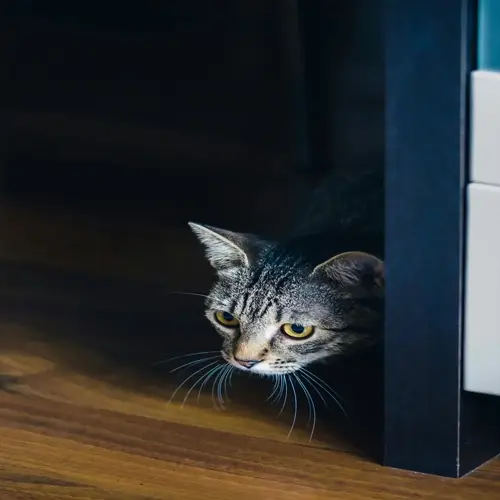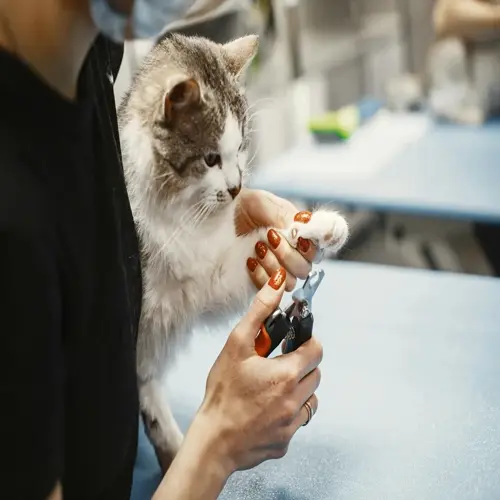5 Cat Personality Types: Know Your Feline

Written by
David Smith
Reviewed by
Prof. Henry Webster, Ph.D.Knowing what makes a cat tick can change how we care for them, because it uncovers unique behavioral patterns of felinity
The Feline Five are neuroticism, extraversion, dominance, impulsiveness, and agreeableness
On the spectrum defined by Dr. Finka, you see social-energy preferences of being a cat that prefers being around humans to a cat that will come and go, to the curious explorer, to the hunter, and back to the cantankerous cat
Of course, accurately identifying a cat's personality requires a structured evaluation of the cat's behaviors and reactions to new people and new experiences
Use enrichment that matches their personality - anxious cats need places to hide, hunters need prey to play with
Personalities change with maturity, such as kittens are curious- explorers, adults are temperamental - stop exploring, and seniors just want to engage with someone who might need them to be dependent on them in a respectful way.
Article Navigation
If you've ever invited cats into your home, you've likely noticed that each one has its own unique behavior. Some cats follow you around wherever you go, and others do not respond to your affection. This difference comes from the fact that personality types affect the cat's reaction. By recognizing these patterns in cat personality types, you will be better able to adapt to their needs.
Understanding your cat's personality transforms everything. You minimize altercations between cats. You strengthen attachment. You begin to understand the most natural way to care for your cat. I've even witnessed anxious cats actually relax once their owners understand their fear responses. Your relationship fundamentally changes.
We will review two central frameworks. The Feline Five encompasses fundamental traits like neuroticism and agreeableness. Dr. Finka's spectrum is based on social energy levels. Combined, they help determine whether your cat will chase its toys or bolt from an unfamiliar visitor.
Prepare for information you can implement right away! Drawing on my extensive experience as a behavioral consultant, I will share practical and easy-to-follow tips to help you reduce stress levels through simple adjustments. You may find that your cat's peculiarities will start to make some sense!
The Feline Five Personality Types
The scientific research into domestic cats that forms the basis of Feline Five identifies five basic personality traits: neuroticism, extraversion, dominance, impulsiveness, and agreeableness. Each cat has its own unique mix of different traits, none of which is the epitome of any one.
Imagine your cat's traits as colors mixing. It may be very extra but a bit neurotic. This is why it loves to explore but hides during storms. My neighbor's cat, Tiger, is very sociable and loves meeting guests, but goes into a panic at loud noises. This combination of traits creates its unique blend of behavior.
Each of these traits directly affects care needs. Neurotic cats need safe hiding spots. Extraverted cats need daily play challenges. Dominant cats need many guarded resources. Impulsive cats need predictable routines. Agreeable cats need frequent affectionate sessions for deep bonding.
I once had a working experience with a domineering cat that was food bowl aggressive. His people added additional feeding areas in separate rooms. Those changes to his environment eliminated food bowl conflicts overnight. Matching care to personality resolves so many issues. Quick recovery is seen.
Neuroticism
- Cats with high neuroticism scores display anxiety and fearfulness around unfamiliar people or situations. They typically hide during loud events or when visitors arrive. Providing covered beds, cat tunnels, and quiet retreat spaces helps them feel secure. Gradually exposing them to low-stress positive experiences builds confidence over time.
Extraversion
- Extraverted cats exhibit constant curiosity and need regular mental stimulation. They actively explore new environments and investigate novel objects. Without sufficient enrichment like puzzle feeders or rotating toys, they may develop destructive behaviors. Daily interactive play sessions prevent boredom and channel their energy positively.
Dominance
- Dominant cats assert control over resources including food stations and resting areas. They may block other pets from accessing shared spaces. Solutions include placing multiple feeding stations apart and providing individual litter boxes. Vertical spaces like cat trees allow subordinate cats to avoid confrontations safely.
Impulsiveness
- Impulsive cats react unpredictably to stimuli with sudden bursts of energy. Their erratic behavior often stems from environmental stressors or lack of routine. Maintaining consistent schedules for meals and playtime creates predictability. Identifying and removing stress triggers helps them develop calmer responses to daily situations.
Agreeableness
- Agreeable cats seek social interaction through headbutting, purring, and physical closeness. They adapt well to multi-pet households and family environments. These cats typically show affection through kneading and enjoy group activities. Changes in their friendly behavior may indicate underlying health issues needing veterinary attention.
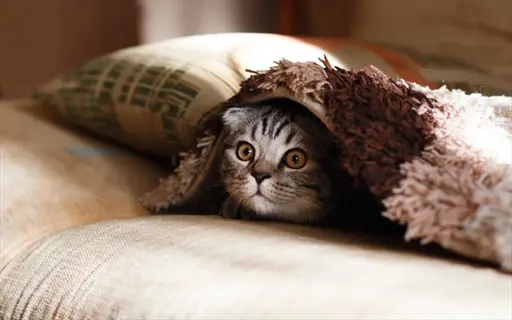
Neurotic Cat Setup
- Cats with high neuroticism display strong anxiety around unfamiliar people or situations they don't recognize immediately
- These felines typically hide during loud events like thunderstorms or when unexpected visitors arrive unexpectedly
- Providing covered cat beds and quiet retreat spaces helps them feel secure in their home environment
- Cat tunnels offer safe exploration paths that allow cautious movement without feeling exposed unnecessarily
- Gradual exposure to low-stress positive experiences builds confidence over several weeks of consistent practice
- Calming pheromone diffusers can supplement environmental adjustments by reducing overall stress hormone levels
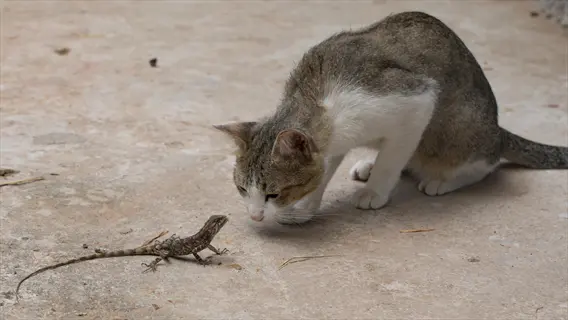
Extravert Play Station
- Extraverted cats exhibit constant curiosity and need regular mental stimulation throughout their daily routines
- They actively investigate new objects brought into the home with intense focus and determination
- Without sufficient enrichment like puzzle feeders, they may scratch furniture or exhibit destructive behaviors
- Daily interactive play sessions prevent boredom and channel their energy into positive activities
- Rotating toys every 3-4 days maintains their interest in play activities effectively
- Vertical spaces like cat trees satisfy their natural climbing instincts and provide observation points
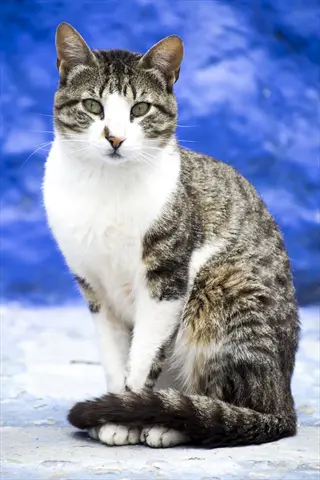
Dominance Management
- Dominant cats assert control over resources including food stations and preferred resting locations
- They often block other pets from accessing shared spaces through physical positioning
- Solutions include placing multiple feeding stations in different rooms throughout the home
- Provide individual litter boxes plus one extra to prevent resource guarding effectively
- Tall cat trees allow subordinate cats to avoid confrontations safely and comfortably
- Establishing clear territory boundaries reduces tension in multi-cat households significantly

Impulsive Behavior Support
- Impulsive cats react unpredictably to stimuli with sudden bursts of running and jumping
- Their erratic behavior often stems from environmental stressors like schedule changes
- Maintaining consistent schedules for meals creates predictability in their daily lives
- Identify and remove triggers like loud appliances or chaotic environments systematically
- Calming pheromone diffusers help them develop stable responses to daily situations
- Providing designated 'zoom zones' with safe pathways minimizes accidental damage
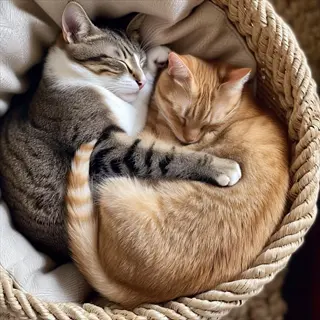
Agreeable Social Space
- Agreeable cats seek social interaction through headbutting and loud, frequent purring
- They adapt well to multi-pet households and busy family environments comfortably
- These cats show affection through kneading movements and close physical proximity
- Provide group play sessions with feather wands that encourage cooperative activities
- Changes in their friendly behavior may indicate health issues needing veterinary attention
- Creating communal resting areas with multiple beds facilitates their social nature
Dr. Finka's 5 Cat Personality Spectrum
This personality framework was developed by respected feline welfare scientist Dr. Lauren Finka, whose work has involved years of research to help us better understand the interior lives of cats beyond superficial behaviors. I have utilized Dr. Finka's research in countless case studies regarding cats in the adoption process to great success.
This spectrum emphasizes social preferences and energy levels, unlike the Feline Fives traits. Its utility is in selecting compatible homes. A busy family should not have a cat that craves constant companionship. I have seen this difference in needs cause stress.
Think of the Human Cat type. These are the types of cats that follow you around the house, sleep on your keyboard while you are typing, and crave your affection. On the other hand, Cantankerous Cats do not want to be touched and want their personal space. Noticing the distinction can help you avoid forcing it with your cat.
The five types outline an environmental approach. Hunter Cats need enrichment that mimics prey. Cats' Cats like to be with other cats. Inquisitive Cats should have areas to explore. Matching homes to personality traits decreases shelter surrender rates.
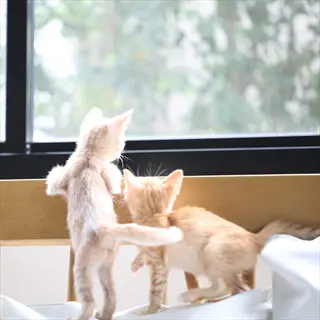
Human Cat Lifestyle
- Human Cats form intense bonds with their primary caregiver and seek constant physical closeness throughout the day
- They typically sleep in their owner's bed and prefer resting on personal items like keyboards or paperwork
- These cats display affection through persistent head-butting and kneading behaviors when near their favorite person
- Without daily dedicated attention, they may develop separation anxiety and exhibit distress vocalization patterns
- Ideal for retirees or people working from home who can provide consistent companionship and affection
- Changes in their clinginess could indicate medical issues needing prompt veterinary examination
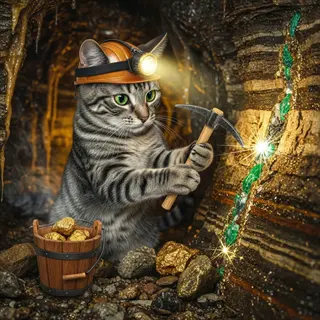
Inquisitive Cat Environment
- Inquisitive Cats show intense interest in novel stimuli including new scents, sounds, and objects in their environment
- Early socialization during kittenhood (2-7 weeks) strongly influences their comfort with exploration as adults
- They require regular environmental updates like puzzle feeders and foraging boxes to prevent boredom
- Cat castles with multiple levels satisfy their need to investigate vertical spaces and observe territories
- Exposure to safe outdoor experiences through catios or leash walks fulfills their exploratory instincts
- Without adequate stimulation, they may attempt dangerous escapes or develop destructive chewing habits
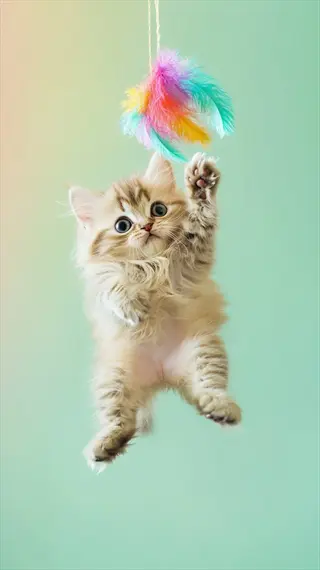
Hunter Cat Activities
- Hunter Cats display strong predatory instincts through crouching postures, tail twitching, and stealthy approaches
- Indoor cats satisfy hunting urges by 'killing' toys and presenting them to owners as symbolic gifts
- Scheduled play sessions should mimic natural hunt sequences: stalking, chasing, pouncing, and capturing
- Rotate between different prey-like toys (mice, feathers, crinkle balls) to maintain engagement levels
- Provide 'kill zones' with scratching posts where they can complete hunting sequences satisfyingly
- Avoid punishing object batting - redirect energy to appropriate toys to prevent furniture damage
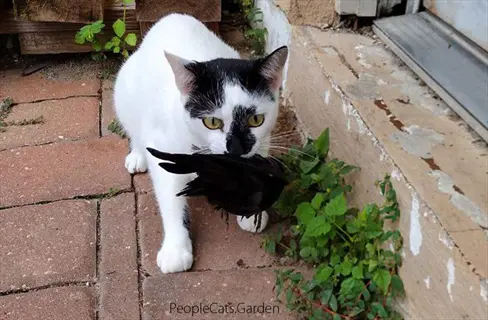
Cantankerous Cat Space
- Cantankerous Cats maintain strict personal boundaries and often retreat when sensing potential touch approaches
- Their aversion to handling typically stems from insufficient early socialization or sensory sensitivities
- Respect their autonomy by offering affection only when they initiate contact through slow blinking
- Create 'no touch' safe zones with elevated perches where they can observe without interaction pressure
- Use interactive toys like laser pointers for bonding that maintain physical distance requirements
- Sudden increases in aloofness may indicate pain - consult a veterinarian for thorough examination
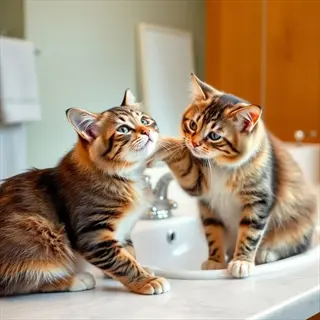
Cats' Cat Socialization
- Cats' Cats form strong social bonds with other felines through mutual grooming and shared resting
- They typically develop best in pairs or groups introduced during kittenhood socialization periods
- Provide communal resources like oversized beds and group feeding stations to facilitate bonding
- Multi-cat trees with platforms encourage social climbing and cooperative play interactions
- Monitor group dynamics to ensure no individual becomes excluded from social grooming sessions
- Introduce new cats gradually using scent-swapping techniques to maintain peaceful coexistence
Identifying Your Cat's Personality
Figuring out your cat's personality is a lot like being a detective. You become an observer, noticing patterns. I always advise clients to write down behaviors for 3-7 days, so that one-off events won't be misinterpreted as personality traits. By recording the observations objectively, true patterns will be revealed.
Identify appropriate moments for observation. Watch her when she is at ease in known surroundings. Avoid times of stress, such as during visits to the veterinarian. My tabby, Luna, shows her true character only in the quiet evenings. There is a significant misinterpretation of reactions in animals when they are subjected to forced introductions.
Always rule out health problems. Sudden changes, such as hiding out or becoming aggressive, may indicate an underlying illness. I once diagnosed a urinary tract infection in a cat who was 'cantankerous' but was actually in pain. Consult your veterinarian before placing labels for personality.
Monitor the reaction closely and methodically. Keep track of the child's responses to any stranger, play actions, and reactions to frustration. Maintain a simple chart to keep records of these daily activities. In a week, you should be able to know whether you are mothering a curious explorer, or a cautious observer.
Stranger Response Test
- Procedure: Have a friend visit and note your cat's response from a distance
- Interpretation: Hiding immediately indicates neuroticism. Approaching for headbutts suggests agreeableness
- Timing: Conduct during calm periods, not when cat is sleeping or eating
- Variation: Try with different genders/ages of visitors for consistent patterns
- Baseline: Compare to normal behavior when alone with family members
- Duration: Allow 15 minutes for cat to adjust before recording reactions
Play Style Analysis
- Tools: Use feather wand, laser pointer, and crinkle ball in separate sessions
- Behavior Notes: Stalking/pouncing indicates hunter traits. Ignoring toys points to cantankerous
- Engagement Level: Measure interest duration (under 1 min = low, over 5 min = high)
- Intensity: Gentle taps vs aggressive attacks reflect energy differences
- Prey Preference: Note if cat favors certain toy types (feathers vs balls)
- Session Frequency: Schedule 3 short sessions across different days
Social Interaction Tracking
- Observation Period: Track behavior over 3 days at different times
- Key Signs: Following owners constantly marks human cat. Avoiding touch signals cantankerous
- Vocalization Log: Record frequency of meows, purrs, or trills during interactions
- Affection Methods: Note if cat initiates headbutts, lap-sitting, or slow blinks
- Multi-pet Dynamics: Observe grooming/sharing behaviors indicating cats' cat traits
- Personal Space: Measure average distance cat maintains from humans
New Object Introduction
- Setup: Place unfamiliar item (cardboard box) in their space
- Responses: Immediate investigation shows inquisitiveness. Hesitation suggests neuroticism
- Safety Protocol: Use scentless objects to avoid stress from strong odors
- Proximity Test: Gradually move object closer if cat shows initial fear
- Interaction Time: Record how long until first contact (0-30 min scale)
- Recovery Note: Observe return to normal activities after object removal
Routine Change Response
- Test: Delay feeding time by 30 minutes or rearrange furniture
- Reactions: Erratic vocalizing implies impulsiveness. Calm adaptation reflects agreeableness
- Change Scale: Start with minor adjustments before major disruptions
- Stress Indicators: Watch for excessive grooming, hiding, or appetite changes
- Recovery Speed: Note how quickly cat returns to normal behavior patterns
- Multi-test Validation: Repeat with different changes to confirm patterns
Enrichment Strategies for Each Type
Understanding both personality frameworks is the first step in practical enrichment. Anxious cats need covered places to sleep for their Feline Five traits, while the more extraverted require food puzzles. Dr. Finka's spectrum guides different solutions. Hunter Cats need a cat feather wand to play with every day and so forth. A simple change can bring quick results.
Create a solution tailored to your cat's specific needs. The "Human Cat" has neurotic needs to snuggle near safety-hiding spots. My client's cat, Mochi, thrived with this combination. Supervise all toys, such as feather wands, to avoid swallowing hazards.
Simultaneously address different needs. Cantankerous Cats apply to window perches and motorized toys that you control remotely. Avoid the assumption that the cat must interact. Cats' Cat personalities exist in group feeding stations where I have witnessed bonded pairs flourish with shared puzzle feeders.
Safety is the primary concern for every solution. Inquisitive Cats love to explore, combined with safe balconies, will prevent falls. Hunter Cats need safe 'kill' toys that are not items in the home. Check toys for loose parts every week. The personality of the cat determines what they need for perfect enrichment.
Neurotic + Dominant Combo
- Create 'safe dominance' zones with covered beds on elevated perches
- Use pheromone diffusers near resources to reduce territorial stress
- Establish predictable routines for feeding and play to lower anxiety
- Provide multiple escape routes in shared spaces to prevent confrontations
- Monitor for bullying behaviors masked by anxiety-driven aggression
Inquisitive + Hunter Pairing
- Rotate hunting toys weekly to maintain novelty and engagement
- Create 'hunt trails' with hidden treats leading to puzzle feeders
- Supervise outdoor access through enclosed catios for exploration
- Incorporate food-dispensing balls into play sessions for mental challenge
- Avoid overstimulation by limiting intense play to 15-minute sessions
Agreeable + Human Cat Overlap
- Schedule group play sessions with feather wands for social bonding
- Provide communal resting areas with heated beds for multiple cats
- Use treat-dispensing toys during owner absence to prevent separation anxiety
- Establish grooming rituals with soft brushes to strengthen human-cat bonds
- Monitor for attention-seeking behaviors that may indicate neglect
Cantankerous + Neurotic Mix
- Create private 'no-go' zones with covered beds in quiet rooms
- Use automated toys triggered by motion sensors to avoid direct interaction
- Implement scent-swapping techniques before introducing any changes
- Provide multiple identical resources to prevent competition stress
- Consult vet about anti-anxiety supplements if behaviors escalate
Extraverted + Cats' Cat Blend
- Set up group play stations with multiple interactive toys
- Create communal climbing walls with various difficulty levels
- Schedule synchronized feeding times to encourage social eating
- Provide shared puzzle feeders that require cooperative solving
- Monitor group dynamics to ensure all cats participate equally
Personality Changes Over Time
Cats' distinctive life stages are expressed. Kittens are curious and full of play, junior cats like to push limits, and adult cats are settled into regular routines. Senior cats are often more dependent or irritable. This reflects the shifting needs of a growing cat.
Differentiate temporary transitions from lasting changes. For example, moving can cause any cat to hide for a short time. Getting new pets could lead to guarding behavior. These fade as the cat adjusts. However, cognitive decline in older cats causes permanent changes. I have seen cats become needy after the loss of vision or other senses.
Environmental factors cause observable changes. New baby sounds tend to drive cats away from certain rooms. Absence of owners may lead cats, known as Human Cats, to suffer from separation anxiety. One of my client's cats became uninterested in play after construction started in the area. Usually, these reactions normalize.
Document changes in behavior carefully. Note whether behavior changes persist after the triggering event. A once sociable cat may need veterinary care if the avoidance of touch continues for several months. Observing patterns will help to distinguish between growth (or socializing) situations and health problems. Your records will be helpful to professionals apart from yourself.
Kitten Development (0-1 year)
- Extraverted traits dominate with constant exploration and play behavior
- Hunter instincts peak during this period with frequent stalking practice
- Socialization window closes around 14 weeks - impacts future agreeableness
- Fear responses develop gradually through environmental exposure
- Early trauma can create lasting neurotic tendencies in adulthood
- Personality remains fluid until 6 months as neural pathways form
Adult Stabilization (1-7 years)
- Core personality traits solidify between ages 1-3 years
- Dominance patterns establish in multi-cat households by age 2
- Playfulness decreases by 30% compared to kittenhood
- Routine preferences strengthen - impulsiveness typically decreases
- Social bonds deepen with primary caregivers (human cats)
- Exploratory behavior reduces as territory familiarity increases
Senior Transitions (8+ years)
- Activity levels decrease significantly - sleeping increases 40%
- Human cats may show increased clinginess or vocal demands
- Cantankerous cats often tolerate less handling and interaction
- Cognitive decline may mimic neuroticism with new confusion
- Arthritis pain can cause irritability resembling dominance
- Hearing loss may create startle responses similar to neuroticism
Junior Stage (1-2 years)
- Playfulness peaks with maximum energy expenditure during activities
- Dominance behaviors emerge in multi-cat households through testing boundaries
- Exploration expands to include vertical territories and outdoor access
- Social preferences solidify - cats' cats begin bonding with companions
- Impulsive reactions are common as they learn environmental boundaries
- Curiosity drives problem-solving skills through puzzle feeder engagement
Adult Stabilization (2-7 years)
- Core personality traits solidify between ages 2-3 years
- Dominance patterns establish firmly in multi-cat social structures
- Playfulness decreases by 30% compared to junior stage
- Routine preferences strengthen - impulsiveness typically decreases
- Social bonds deepen with primary caregivers (human cats)
- Exploratory behavior reduces as territory familiarity increases
5 Common Myths
Cats are only capable of superficial attachment to people and can only form relationships based on their primary need for food.
It has been shown, scientifically, that cats form secure attachments the same as dogs and human infants. The agreeable and Human Kat character seeks affection from its acquaintances as evidenced by head-butting, grooming of each other and going to their owners. The intensity of the bond can be measured from the reduced amounts of stress inducing hormones when the owners are nearby. These emotional attachments can develop even if the feeding and other routines are not set.
Playful cats scratching furniture indicates intentional spite rather than unmet instinctual needs.
Destructive scratching reflects natural claw maintenance and territory-marking instincts, particularly in Hunter Cats and Extraverted personalities lacking adequate outlets. Provide appropriate scratching posts covered in sisal or cardboard near targeted areas. Redirect energy through daily interactive play sessions mimicking hunting sequences to satisfy predatory urges harmlessly.
Distant cats like being left alone and should not be pressured into contact.
Testy and Nervous cats often want company but like it low key. Respect their distance by engaging in side by side activity like treat puzzles, avoiding direct contact. Use toys that emphasize distance but help them grow trust from positive experiences. Look for subtle signs of bonding such as slow blinks which mean they like your company.
The personality traits of cats are fixed for life and do not change.
The personality of cats is very much changed with age and is of the exploratory type in kittens which matures into stable adult personality, seniors developing new traits from old age. Environmental changes as a move or other pets have significant measurable effects upon temperament traits. Progressively enriching experience to the individual to allow various changes at any age.
Multiple litter boxes are unnecessary for cats showing no apparent elimination issues.
Dominant personalities covertly restrict box access even without visible conflicts. The feline ethology guideline requires one box per cat plus one extra, placed in separate zones. This prevents resource guarding stress that may manifest as subtle avoidance behaviors rather than overt aggression. Regular box maintenance also prevents aversion development.
Conclusion
Understanding cat personality types fundamentally changes your relationship. You stop misreading behaviors as stubbornness and see them as a form of communication. This awareness builds mutual respect. Your cat feels understood. You feel connected in ways you never expected possible.
The Feline Five and Finka's spectrum complement each other perfectly. The first describes pre-existing base traits such as anxiety levels. The second describes social preferences. Taken together, these two systems provide a comprehensive picture of what's happening. You will understand precisely why your cat is hiding or demanding play.
Continue to observe your cat's unique language. Notice little changes in their consistent habits. Watch how they respond to new things in their environment. This vigilance will not only help you become closer but also catch health problems faster, allowing you to enjoy more of who they are.
Make today a day of simple movements. Select one of the enrichment strategies in this guide. Observe your cat's reaction. This small measure marks the beginning of a true understanding of your cat, which is the key to your mutual happiness and appreciation of its unique personality.
External Sources
Frequently Asked Questions
What are the main cat personality types?
The two primary frameworks are the Feline Five (Neuroticism, Extraversion, Dominance, Impulsiveness, Agreeableness) and Dr. Finka's spectrum (Human Cat, Inquisitive Cat, Hunter Cat, Cantankerous Cat, Cats' Cat). These scientifically validated models explain behavioral patterns like:
- Anxiety responses in neurotic cats
- Social bonding in Human Cats
- Predatory instincts in Hunter Cats
- Boundary preferences in Cantankerous Cats
How can I identify my cat's personality?
Conduct structured observations over 3-7 days tracking key behaviors:
- Reactions to strangers (hiding vs. approaching)
- Play intensity and toy preferences
- Social interactions with humans/pets
- Responses to routine changes
- Exploration of new objects
Do cat personalities change as they age?
Yes, personalities evolve through three key phases. Kittens show exploratory/high-energy traits that stabilize into adult patterns. Seniors develop dependency or irritability from aging. Environmental triggers like moves or new pets cause temporary shifts, while health issues may create lasting changes requiring veterinary attention.
Are certain breeds linked to specific personalities?
While breed tendencies exist (e.g., Siamese vocalness), individual differences within breeds outweigh generalizations. A Maine Coon might display cantankerous traits, while a typically aloof British Shorthair could show strong Human Cat tendencies. Focus on observing behaviors rather than breed assumptions.
How do I match enrichment to my cat's personality?
Tailor activities to core traits:
- Neurotic cats: Covered beds and pheromone diffusers
- Hunter Cats: Daily feather-wand sessions
- Human Cats: Shared sleeping pads and puzzles
- Cantankerous Cats: Remote-controlled toys with no touch required
- Extraverted Cats: Rotating puzzle feeders
Can cats sense human emotions?
Research indicates cats detect emotional cues through voice tones and body language. Agreeable and Human Cat personalities often respond with comforting behaviors like purring during distress. However, reactions vary, cantankerous cats may withdraw, while neurotic cats mirror owner anxiety through hiding or stress grooming.
Do cats mirror their owner's personality?
While cats don't replicate human traits, their behavior adapts to owner interactions. Anxious owners may reinforce neurotic behaviors through inconsistent routines. Calm, predictable engagement helps cats develop secure attachments regardless of innate personality. The human-cat dynamic shapes expression more than imitation.
What's the biggest myth about cat personalities?
The misconception that aloof cats prefer isolation. Cantankerous and Neurotic types often desire companionship but require low-pressure interaction. Signs like slow blinks or parallel play indicate engagement preference. Forcing contact worsens avoidance; instead, offer distance-respecting activities like treat puzzles or laser pointers.
How does personality affect multi-cat households?
Dominant personalities control resources, requiring:
- Extra litter boxes to prevent guarding
- Separate feeding stations
- Vertical escape routes
- Cats' Cat personalities need group activities
- Neurotic cats require private retreats away from interaction zones
Can personality indicate health issues?
Sudden changes often signal medical concerns. An agreeable cat becoming irritable may have pain. Human Cats avoiding contact could indicate illness. Increased neurotic behaviors sometimes reflect cognitive decline in seniors. Track deviations from baseline personality and consult a vet if changes persist beyond trigger events.
